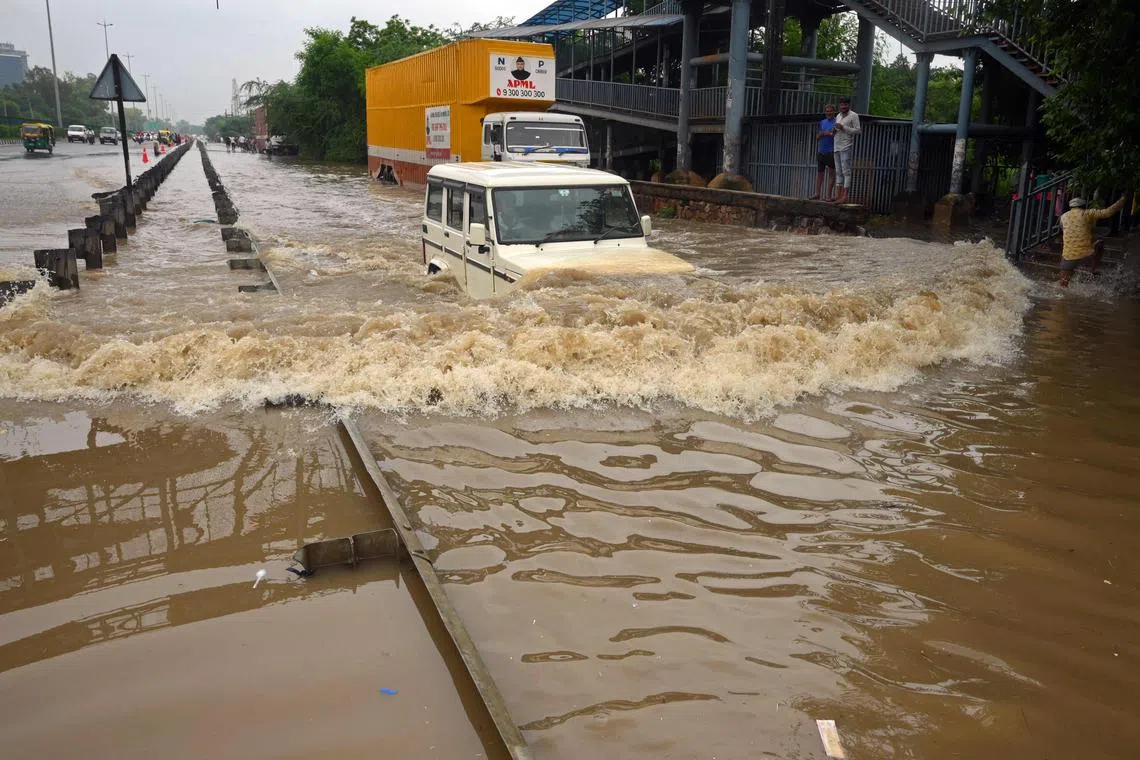Northern India braces itself for more torrential rain, as floods kill 22
Sign up now: Get insights on Asia's fast-moving developments

A car driving along a flooded highway after heavy monsoon rains in Gurgaon on the outskirts of New Delhi on Sunday.
PHOTO: AFP
Follow topic:
NEW DELHI - India is facing the prospect of further torrential rainfall across swathes of the country over the coming days, increasing the risk of widespread damage after the wettest New Delhi day in four decades on Sunday left millions wading through knee-deep water.
Across the country’s north, at least 22 people have been killed, the authorities and local media said. The downpour has also caused landslides and flash floods in the region.
On social media, users shared dramatic footage of landslides, flash floods tearing through villages and rivers raging in the Himalayan state of Himachal Pradesh, one of the worst-hit areas. Flash floods over the weekend brought down a bridge and swept away several hutments. The authorities used helicopters to rescue people stranded on roads and bridges because of the rain, footage from Reuters partner ANI showed.
In the country’s capital
Safdarjung Observatory, the main weather station in Delhi, recorded 153mm of rain in a 24-hour period ending at 8.30am on Sunday.
That was the highest amount for a single day in July since 1982, and raised water levels in the Yamuna River.
It prompted the state to shut schools, while local officials sought to evacuate those living near the water.
Further north, the authorities in Himachal Pradesh and Uttarakhand asked people not to venture out of their homes unless necessary.
The 22 casualties were reported across the two northern states, Uttar Pradesh, Jammu and Kashmir, and Punjab, the Times of India newspaper reported.
The India Meteorological Department has predicted heavy to very heavy rainfall in the next two days in most northern states, and the western state of Rajasthan. The weather agency has issued a red alert for Himachal Pradesh and a yellow alert for Delhi, Rajasthan and Uttar Pradesh.
Official data shows monsoon rains across the country in the first week of July have already produced about 2 per cent more rainfall than normal.
The summer monsoon brings South Asia 70 per cent to 80 per cent of its annual rainfall, as well as death and destruction due to flooding and landslides.
The rainfall is hard to forecast and varies considerably, but scientists say climate change is making the monsoon stronger and more erratic.
July’s deluge follows months of blistering heat. India has seen maximum temperatures reach above 45 deg C for at least eight consecutive years through 2023, weather department data shows. BLOOMBERG, AFP, REUTERS

